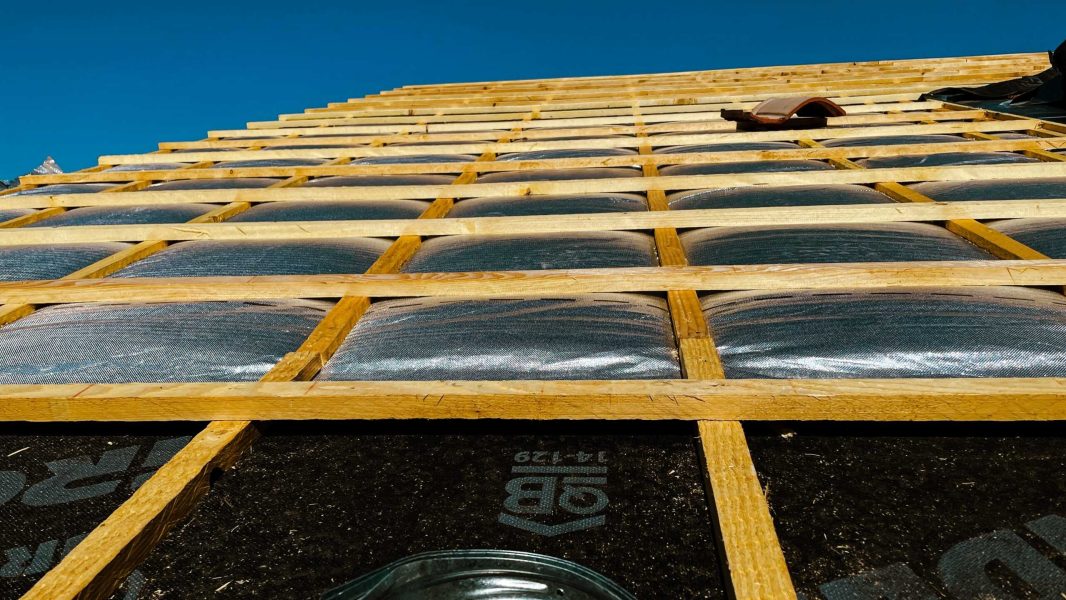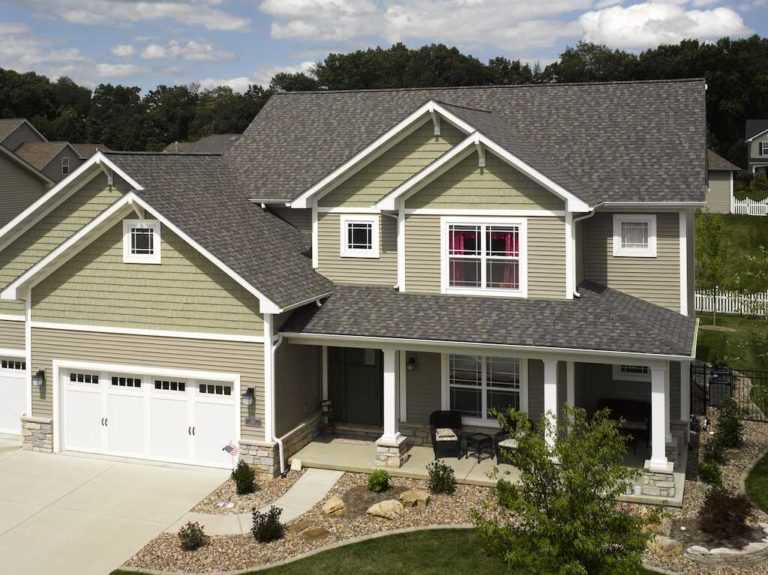Many homeowners fail to realize that there is an additional layer of protection located right below the shingles on their roofs. This layer, which is called the underlayment, plays a critical role in preventing moisture damage.
There are two main types of roofing underlayment to choose from: synthetic and felt. Understanding the pros and cons of each of these underlayment types can help you better understand which one will suit your needs best.
What is Roofing Underlayment?
Roofing underlayment is a material that is positioned below your shingles and above the roof decking. This material is installed directly onto the roof decking and is designed to provide an extra layer of protection against wind, heavy rain, and other harsh weather conditions.
Types of Roofing Underlayment
There are two types of underlayment that are used for roofing. These are felt underlayment and synthetic underlayment.
Felt Underlayment
Felt roofing underlayment is one of the oldest types of underlayment used today. This type of roofing underlayment is created by fiberglass mats or saturated paper. It is combined with asphalt to strengthen and create a water-shedding finish.
Felt underlayment is particularly effective at protecting roofs against snow and rain that is wind driven. It is an effective barrier to various weather conditions that a roof is subjected to.
Synthetic Underlayment
Synthetic roofing underlayment is a layer of laminated polypropylene that is applied over the roof deck. In some cases, this type of roofing underlayment is made of polyethylene plastic materials.
Pros and Cons of Felt Roofing Underlayment
As one of the oldest roofing underlayment options, there are several reasons why this product is used today. The main advantage of using felt roofing underlayment is the cost. Felt tends to cause much less than synthetic roofing underlayments. For people who are more by budget cautious, this can be an exceptional option.
Unfortunately, there are an array of disadvantages to using felt roofing underlayment. One of the biggest disadvantages is that it is unable to be exposed to the elements for more than a few hours. If felt is exposed to the sun, it can cause it to dry out. It can also cause the oils to be pulled out of the material, which can weaken its overall performance and prevent it from being able to protect against moisture on the roof.
Other negative factors of felt roofing underlayment include:
- It can tear relatively easily in high winds
- It can tear easily during installation
- It tends to weigh more than other types of roofing underlayment
- It has a very slippery surface, which can make installing it more difficult for roofing professionals
- The high-weight act of felt roofing underlayment means that less material is packed per roll
It is all simply important to consider that the use of felt roofing underlayment can prevent you from utilizing the warranty for your roof. Many companies now require synthetic underlayment in their warranty provisions. This is definitely something that you should consider when installing the roof on your home.
Pros and Cons of Synthetic Roofing Underlayment
When it comes to synthetic roofing underlayment, there are various pros and cons to its use. To begin, synthetic underlayment is generally known to provide enhanced water resistance qualities. It is generally stronger for providing protection from the elements. Many roofing professionals choose to go with synthetic roofing underlayment due to the fact that it has added strength and longevity. When installed correctly, synthetic roofing underlayment can provide better protection than felt roofing underlayment can.
There are generally four main advantages to installing synthetic roofing underlayment. These include:
- Synthetic roofing underlayment is relatively quick to install
- The materials and the use of synthetic roofing underlayment are safe
- The materials tend to be tougher, especially when compared to felt
- Synthetic roofing underlayment works exceptionally well for repelling water
The durability of synthetic roofing underlayment enables installers to place the material without having to worry about it tearing easily. It is also able to stand up against extended UV ray exposure and moisture in most cases. It also stands up extremely well to boot traffic, which makes the installation process much easier for contractors.
Synthetic roofing tends to be lighter than felt, up to four times lighter in some instances. Synthetic roofing is also much faster to install due to the fact that more material can be packed onto each role.
Like all other products, there are some downsides to using synthetic roofing underlayment. One of the biggest downfalls for most homeowners is the costs associated with its use. Synthetic roofing underlayment tends to be more pricier. The upfront investment for homeowners is generally higher. However, it could save them money in the long run and provide them with peace of mind when it comes to knowing that their roof is protected extremely well from moisture.
It is important that you take into consideration the pros and cons associated with each type of roofing underlayment. This can provide you with better insight when it comes to choosing which option is best for your home. If you are still unsure of which material you should use, consider reaching out to one of our roofing specialists at Resistance Exteriors in Delafield, WI.
Top-Quality Contractor in Delafield, WI
New roof on your home, hiring the right professionals can make a big difference when it comes to the performance and longevity of your roof. Our team at Resistance Exteriors has decades of experience and a wealth of expertise in all types of roofing replacement and repair needs. Our team can go over the differences associated with roofing underlayment options to help you make an informed decision regarding which one will work best on your residential structure.
While working with our team, you can rest assured knowing that you have hired a trusted and professional company that will get the job done right. We offer fair and transparent pricing for all of our roofing projects.
If you are interested in seeing how our team can help improve your home, reach out to our professionals at Resistance Exteriors in Delafield, WI, and schedule a free in-home consultation to get started.


